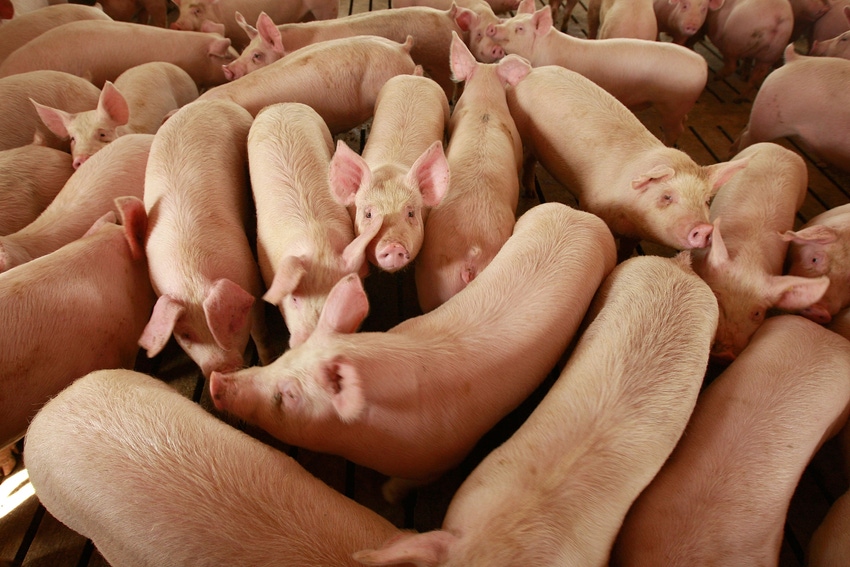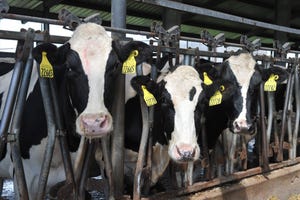Nutrition helps overcome immune-challenged pig growth
Suboptimal growth performance in pigs under low sanitary conditions can be partly compensated by adjustments to diet.
May 20, 2020

Growing/finishing pigs kept under low sanitary conditions (LSC) eat and grow less than pigs kept under high sanitary conditions (HSC). Researchers at Wageningen Livestock Research (WLR) in the Netherlands investigated whether growth performance can be improved by increased levels of dietary energy and essential amino acids (lysine, methionine, threonine, tryptophan, valine and isoleucine) in the diet.
WLR said a study was performed at its Swine Innovation Centre Sterksel to evaluate the effects of dietary energy source (starch versus fat) and increased levels of dietary energy and essential amino acids (EAA) on the growth performance of growing/finishing pigs under LSC — in which the immune system of the pigs was activated — or under HSC associated with a lower state of immune system activation.
In a 2 x 2 x 2 factorial design, pigs were allocated to either HSC or LSC, which was generated by imposing different strategies for vaccination against specific pathogens, cleaning and hygiene protocols, antibiotic treatment and deworming. Pigs were fed one of four experimental diets: a diet with starch as the main energy source or a diet with a combination of fat and starch as the main energy source, each diet having either basal energy and EAA concentrations (B diet) or increased concentrations of energy and EAA (I diet), WLR explained.
According to the researchers, HSC pigs showed a 4% higher average daily feed intake (0.08 kg per day) and average daily gain (47 g per day) than LSC pigs, whereas feed conversion ratio was similar in HSC and LSC pigs.
On the B diet, LSC pigs grew 68 g per day less and ate 6.4% less than HSC pigs, whereas on the I diet, LSC pigs grew 26 g per day less and ate 2.2% less than HSC pigs, WLR said.
The researchers concluded that an increase in dietary energy and EAA content increases growth performance and energy intake more in LSC than in HSC pigs. Compared with studies that supplemented only EAA and not energy to increase the growth performance of immune-challenged pigs, it seems that dietary supplementation of both EAA and energy is more effective in increasing the performance of LSC pigs than dietary supplementation of EAA alone, the researchers added.
Partly replacing dietary starch with fat did not seem to be an effective approach to increase the performance of LSC pigs, WLR said.
The researchers said the study suggests opportunities to at least partly compensate for the reduction in growth performance in pigs kept under low sanitary and/or suboptimal health conditions by modifying the energy and amino acid composition of the diet.
The report, "Amino Acid & Energy Requirements of Growing-Finishing Pigs Kept under Low & High Sanitary Conditions," was authored by C.M.C. van der Peet-Schwering, R.G.J.A. Verheijen, G.P. Binnendijk and A.J.M. Jansman.
You May Also Like



